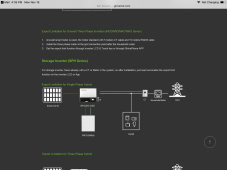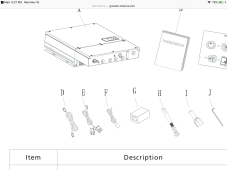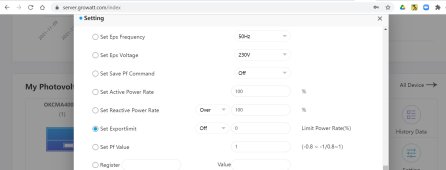I just found this: http://www.ginverter.com/Export-Limitation-Solution.html
It suggests that Growatt MIC and MIN Series inverters can be controlled for zero export using a remote CT-sensor-based ‘Growatt Meter’
I’m curious whether we have any members out there successfully using Growatt inverters in a grid-tied zero-export configuration using one of these Growatt Meters?
It suggests that Growatt MIC and MIN Series inverters can be controlled for zero export using a remote CT-sensor-based ‘Growatt Meter’
I’m curious whether we have any members out there successfully using Growatt inverters in a grid-tied zero-export configuration using one of these Growatt Meters?






